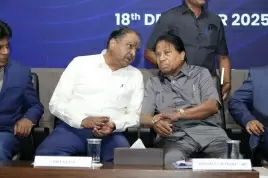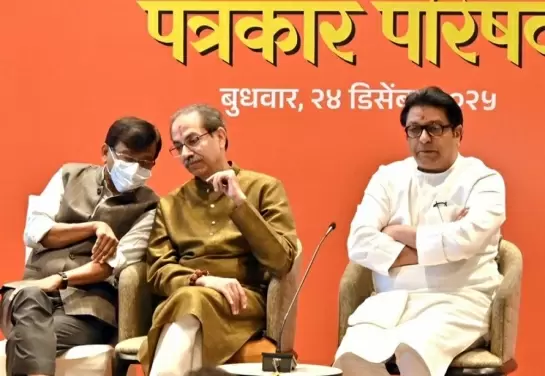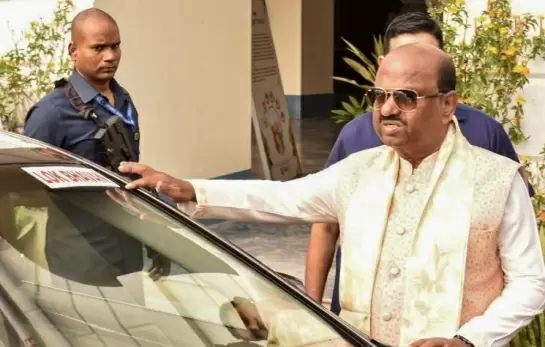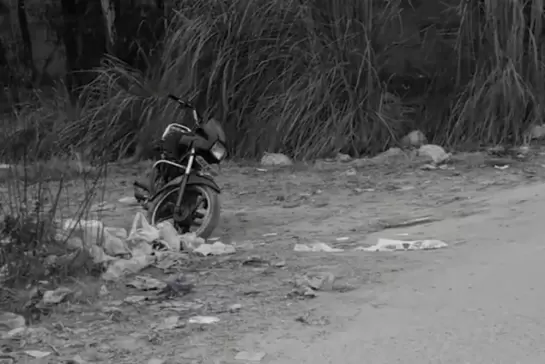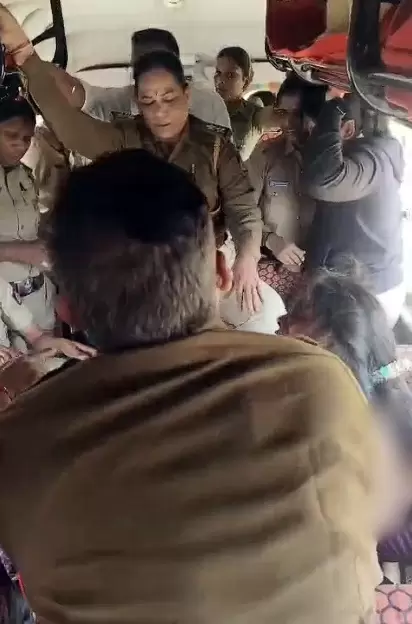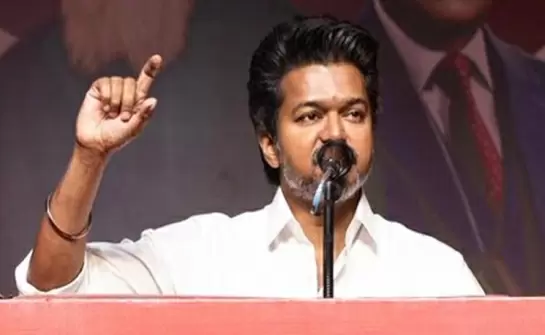Women media persons in some conservative countries are always on dangerous mission

01-March-2013
Vol 4 | Issue 9
The job of a woman journalist can be challenging in any part of the world. But for women mediapersons in conflict-ridden, conservative countries like Afghanistan and Pakistan, getting a news story is often like going on a dangerous mission.
In the field, they routinely face harassment and threats, even death threats. Yet these feisty women continue to swim against the tide and create space for themselves in the crowded universe of journalism.
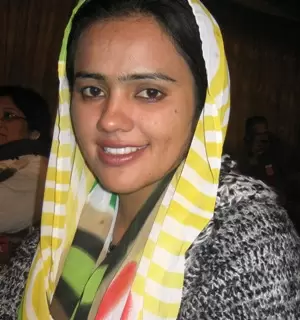 |
|
Farida Nekzad is a role model for girls keen on pursuing journalism in Afghanistan today (Photos: Sarada Lahangir WFS)
|
Take Farida Nekzad 40, who is a role model for girls keen on pursuing journalism in Afghanistan today. Nekzad has faced threats of kidnapping, acid attacks and even an attempt to blow up her apartment ever since she set up her own news agency eight years ago in Kabul.
Despite the fact that the Taliban routinely bombards her with threatening e-mail and phone calls warning her of horrendous consequences if she continues with her work, Nekzad is undeterred.
In a country where women's voices often go unheard, 'Waqt' (which means ‘time’ in Nekzad's native Dari dialect), is one among the handful of female-dominated media outlets that is making its presence felt. It has seven women reporters and three male journalists and operates across 10 provinces.
Recalling the initial days of her difficult journey, the woman who has trained hundreds of women journalists in her country, says, "It wasn't easy. When the Taliban took over, my parents took refuge in Pakistan in 1996 and I had to withdraw my name from Kabul University where I was studying journalism.
“I taught in private Pakistani schools, supervised basic education programmes for Afghan refugees and helped out with Afghan culture groups in Peshawar. But I wanted to be a journalist. So I went to India and continued my education at the Indian Institute of Mass Communication in New Delhi. Later, I began to write as a freelancer for both Afghan and Pakistani publications."
When Nekzad returned to her country in late 2001, she was devastated with the destruction she saw everywhere and was disturbed over the position of Afghani women in society.
"I wanted to give a voice to the poor and exploited Afghani woman. There was no media outlet through which her plight could be projected therefore I, along with my friends, set up an independent news agency,” she recalls.
It was in 2004 that her Kabul-based Pajhwok Afghan News first started publishing work in Dari, Pashto and English. She elaborates, “We were always stirring the political class with the kind of stories we carried, especially those concerning Afghan warlords and provincial power brokers.
Features that commented on new restrictions being imposed on women and the resurgence of violence against women too created quite a furore. I remember one controversial story we published about a warlord exchanging his dog for a young girl, which raised a big hue and cry. Our reporters including me were many times asked to 'beg for an apology' or be killed."
Nekzad describes working as a journalist in her country as "walking on a sword". "In June 2007, a gang murdered an independent radio journalist, Zakia Zaki, breaking into her house and brutally gunning her down in front of her children. She had started Sada-e-Salh (Peace Radio) in 2001.
When I went to her funeral, I received death threats on the phone and an e-mail saying that I would have to face the same dire consequence if I persisted in my reporting. I took this as a challenge and went ahead," says this courageous woman. Nekzad was not spared, "They broke into my house and ransacked it. I have narrowly escaped a bomb attack and an attempt at kidnapping."
According to the Committee to Protect Journalists, since late 2001, 19 journalists have been killed in Afghanistan – 18 while covering war. In Pakistan 34 have lost their lives, 7 while covering war. A report of the South Asia Media Monitor reveals that in 2012, 13 journalists lost their lives in Pakistan and two in Afghanistan.
After the collapse of the Taliban regime in late 2001, a large number of women journalists joined media outlets in the war-torn region. Today, Afghani women are working as journalists, TV presenters, broadcasters and reporters, even though it is still extremely difficult for them to operate owing to deeply entrenched cultural and religious barriers.
"We journalists often face intimidation from the militants, government-backed warlords, drug-smugglers and government officials who interfere with our coverage and dictate terms and conditions of our work, according to their fancy. Being a woman one becomes very vulnerable as no steps have been taken for the safety and security of women journalists,” reveals Hela Haya, a journalist with a local radio station in Kandahar.
The situation in Pakistan is no better. Nadia Batool Bukhari, 28, a TV journalist working for an Indian channel in Lahore, has been struggling hard to keep her professional life in order.
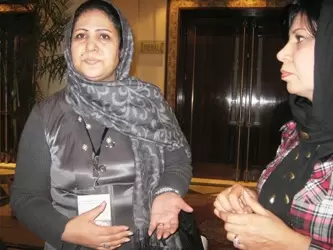 |
|
Women journalists are determined to overcome the challenges they are facing in the profession
|
"I stay in a hostel. I am not allowed to be out until late evening though sometimes it becomes a professional compulsion to do so. While people in my hostel are not very happy with my late working hours, even my male colleagues are not too comfortable with me accompanying them to the field.
I also face harassment in different ways. For instance, when I had been sent to cover the Osama bin Laden story, the senior cameraman who was supposed to help me in shooting the film did not cooperate. There were a lot of difficulties in filing that story for my channel just because I happened to be a woman," she laments.
The Pakistan Association of Television Journalist (ATJ) has only 50 women among its 700 members from around the country. Defying this statistic, women are now visible in the Pakistani media as anchors and talk show hosts on dozens of private radio and television channels, thanks to the burgeoning electronic media industry.
There are approximately 3,200 journalists in Pakistan - 2,842 men and 362 women, making it a ratio of 5:1. Similarly, Afghanistan's Independent Journalists Association (AIJA) reports that there are around 25 to 30 per cent women journalists and media workers among the 10,000-odd media persons working there.
While the media is a growing industry in both countries, issues like sexual harassment and unequal pay packets are a matter of grave concern, even as the battle against severely limiting cultural norms and perceptions continues.
Says Shamim Bano, a senior political reporter with 'The News', an English daily published from Karachi, "Most of the time Pakistani women journalists are not assigned any important beats like politics, economics, courts or even sports. We simply have to fight harder."
Voice of America's correspondent, Rabia Pir talks about social stigma that media women face, "Many families still think that women are not respected in media, so they don't want to let their daughters join this profession. This perception will only change when more and more women enter the profession and hold senior (editorial) positions."
When the going gets tough, the tough get going: That seems to be the adage that these women journalists have adopted for themselves. Young Pakistani journalists, Sabba, from 'Friday Times Weekly' and Shumaisa Rehman from 'News One', are mentally prepared to accept the challenges that come with their profession. They state in unison, "We know that the odds are against us, but we have to fight to initiate a change." - Women's Feature Service








